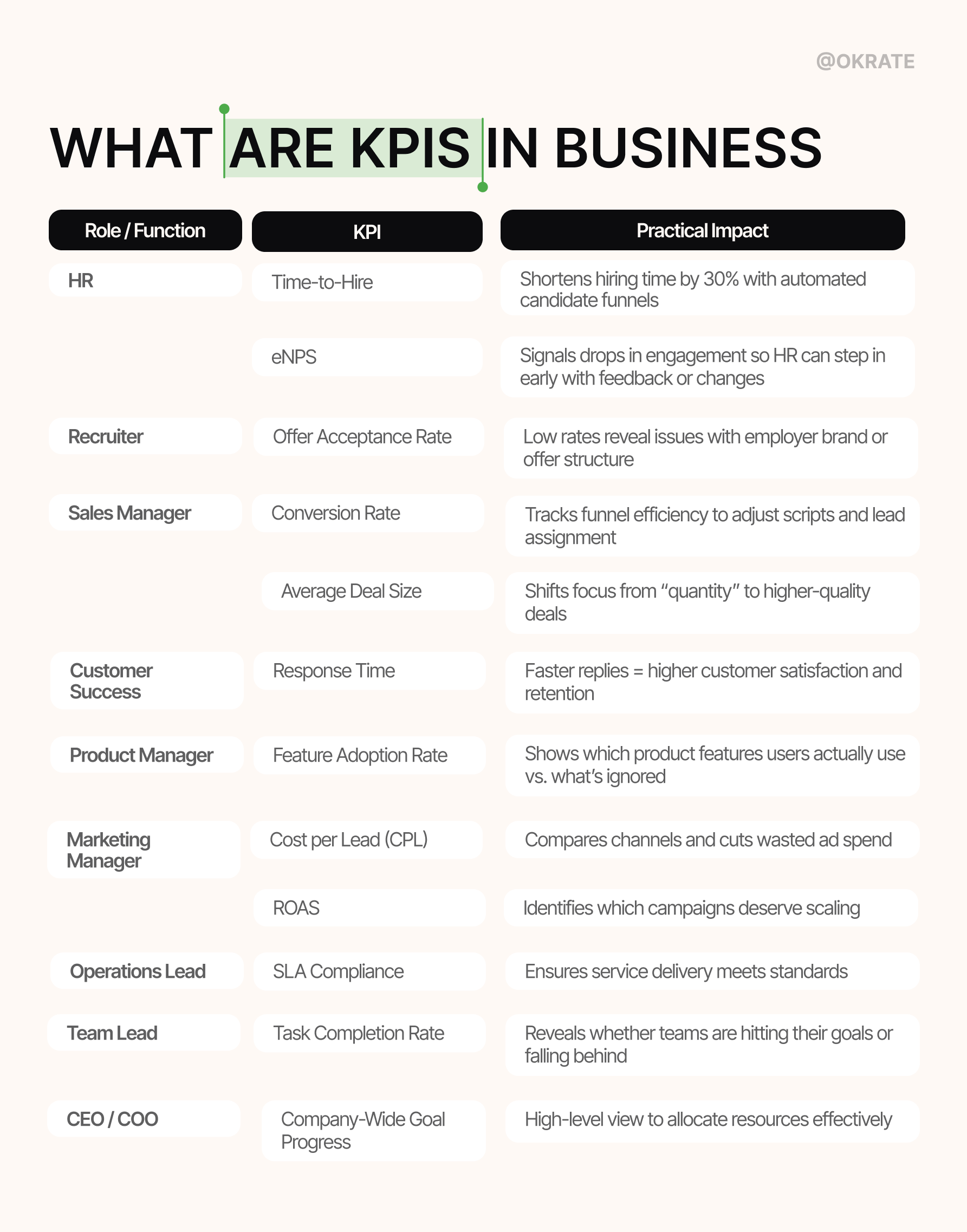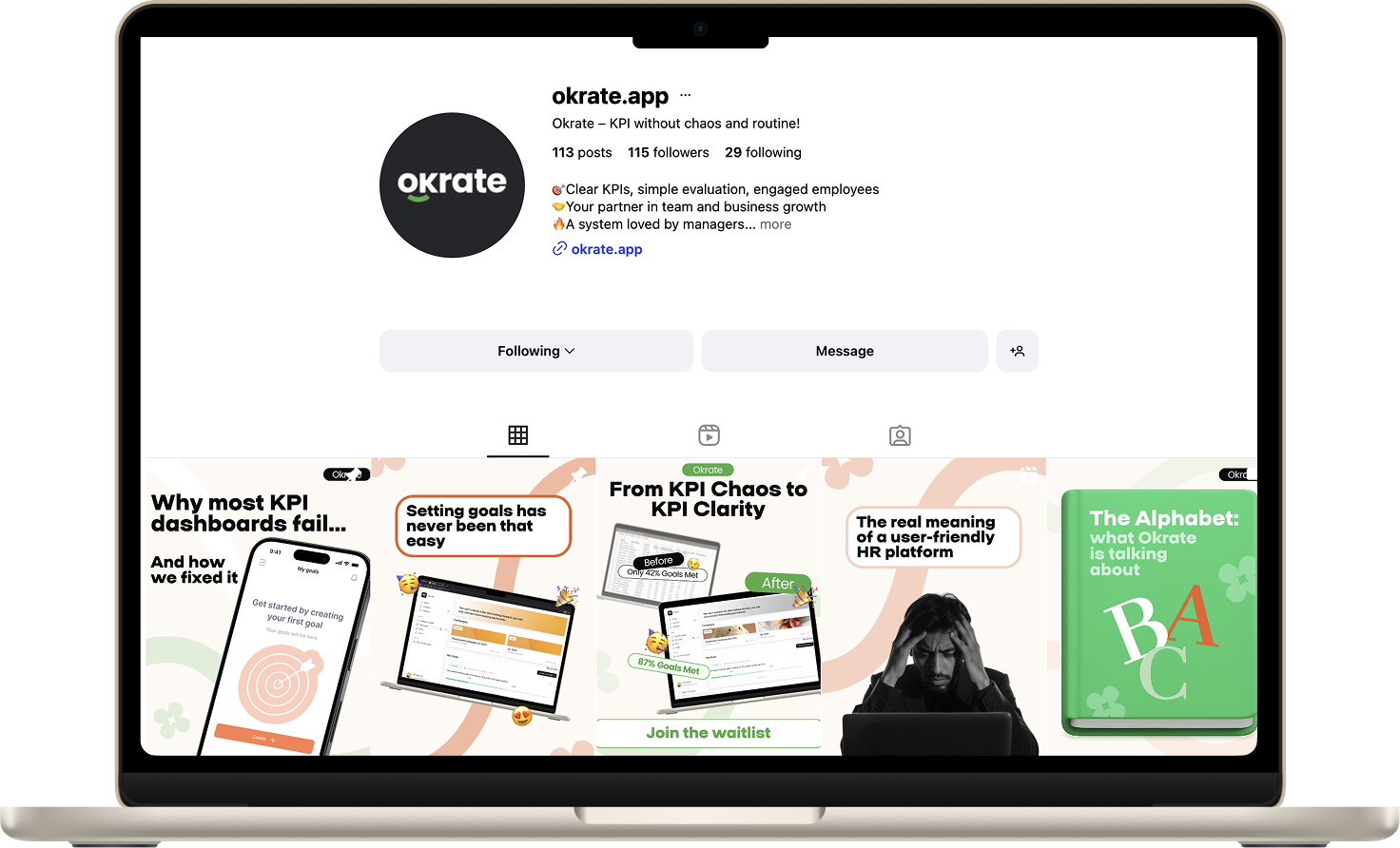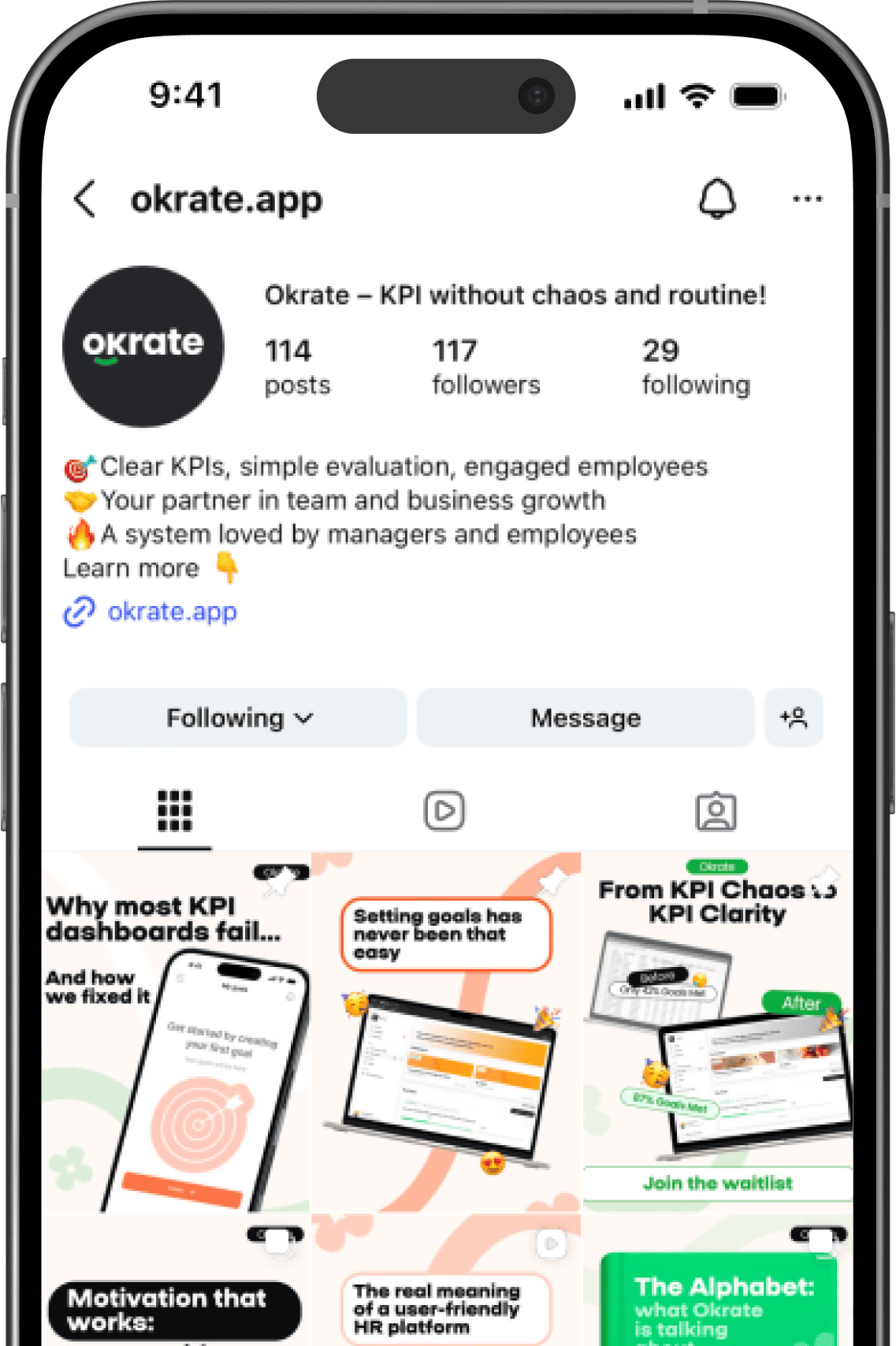Numbers have become the second language of managers. But data alone doesn’t solve problems — companies often drown in metrics if those aren’t clearly tied to strategy. That’s where Key Performance Indicators (KPIs) come in: they turn raw data into clear direction, aligning strategy, people, and resources.
In this article, we’ll break down why KPIs are valuable at every stage of business — and how to make them actually work.
- 95% of companies using BI dashboards and KPIs report faster reporting and decision-making
- 91% of SMBs using KPI dashboards and AI see revenue growth
- Companies that rethink their KPIs using AI are 3x more likely to report financial gains
In this article, we’ll break down why KPIs are valuable at every stage of business — and how to make them actually work.
What are KPIs in business?
Key Performance Indicators (KPIs) are measurable values directly connected to strategic company goals. Unlike general metrics, KPIs are:
- Strategic – tied to business priorities
- Measurable and time-bound – calculated consistently and reviewed regularly
- Actionable – employees can directly influence them through their work
How are KPIs used in business?
Regardless of the size of the company, using KPIs in business can help them direct their efforts and resources in the right direction. KPIs can help individual departments set goals that align with the company's goals.
For example,
For example,

10 benefits of using KPIs
- Clear priorities. KPIs help teams focus on what actually moves the business forward.
- Team alignment. Everyone knows what success looks like and how it’s measured.
- Faster response to problems. KPIs act as early warning signals — allowing for quick course correction.
- Increased engagement. People stay more motivated when they see how their work contributes to bigger goals.
- Better communication with investors. KPIs show results and potential — using a language investors trust.
- Cost and margin control. Helps track profitability, spending, and efficiency in real time.
- Stronger decision-making culture. KPI-driven teams rely on data, not guesswork.
- Benchmarking against competitors. Many KPIs can be compared across your industry.
- Automation and scalability. KPIs fit into dashboards, alerts, and reporting tools that grow with you.
- Smarter resource planning. See clearly where to reallocate budget, people, and time.
How KPIs help startups
Startups move fast. KPIs keep them focused. In early-stage companies, KPIs are a survival tool — not a reporting burden.
Example: A startup added tracking for Activation Rate. After it dropped following a product update, the team found and fixed the issue within a week. Without that KPI, it would’ve taken months.
- Check product-market fit. Metrics like retention and activation reveal if your product solves a real problem.
- Manage your runway. Burn rate and cash runway give you clarity on how long you have to reach the next milestone.
- Keep everyone aligned. KPIs show how each team contributes — even if roles are constantly evolving.
- Quick hypothesis testing. KPIs help validate (or kill) product or growth experiments early.
Example: A startup added tracking for Activation Rate. After it dropped following a product update, the team found and fixed the issue within a week. Without that KPI, it would’ve taken months.
How KPIs help small and medium businesses (SMBs)
Structure is great. KPIs make it manageable. For growing SMBs, KPIs turn “we’re busy” into “we’re improving.”
Example: One SMB used KPIs to track ROAS (return on ad spend) and realized one channel was wasting 40% of their ad budget. After reallocating spend, revenue jumped 22% in one quarter.
- Process optimization. Track cycle time, on-time delivery, or SLA compliance to fix bottlenecks.
- Profitability control. Monitor gross margin, operating margin, and CAC to stay financially healthy.
- Employee retention. HR KPIs like eNPS and onboarding time flag engagement issues early.
- Company-wide visibility. When KPIs are in dashboards, progress is visible to everyone — not just leadership.
- Competitive edge. Companies that use KPI analytics consistently grow 25% faster than peers.
Example: One SMB used KPIs to track ROAS (return on ad spend) and realized one channel was wasting 40% of their ad budget. After reallocating spend, revenue jumped 22% in one quarter.
How to implement KPIs without the headache
- Choose 3–5 key KPIs per level (company → department → team)
- Use SMART goals with clear success ranges (“green zones”)
- Build one-look dashboards — ditch the spreadsheet chaos
- Run monthly reviews to reflect, adjust, and learn
- Train managers to read data and translate it into action
We wrote in detail about why KPI initiatives sometimes fail in the article “Why KPI systems fail: top implementation mistakes” — be sure to check it out to avoid repeating typical mistakes.
KPI systems aren’t about micromanagement. They’re about clarity, direction, and measurable progress. For startups — they’re the difference between chasing growth and building it. For SMBs — they’re the backbone of scalable, transparent operations. With the right KPIs, your team stays aligned, your decisions stay smart, and your growth becomes sustainable.











